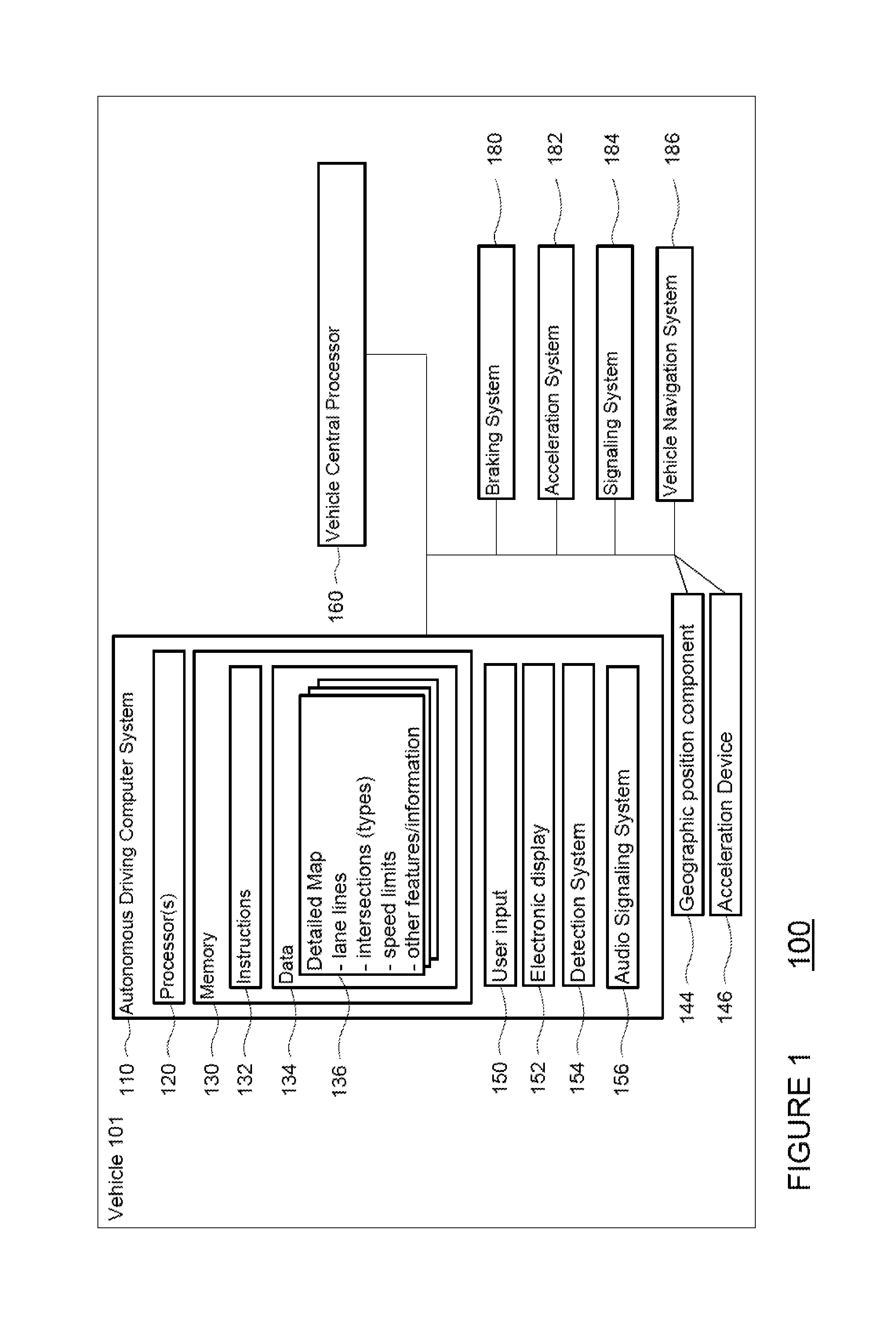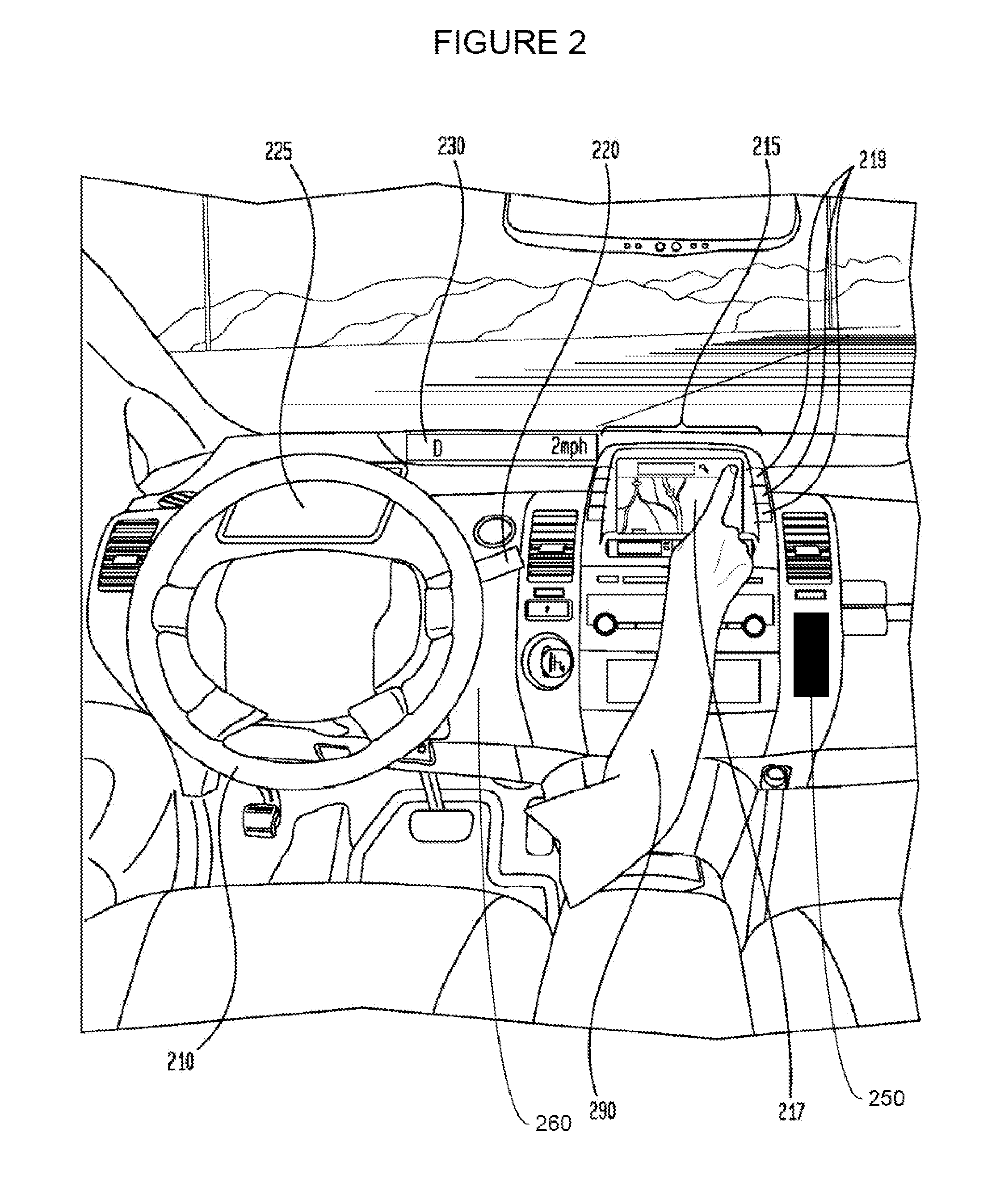Vehicle communication using audible signals
a technology of vehicle communication and audible signals, applied in the direction of process and machine control, distance measurement, instruments, etc., can solve the problems of vehicle not knowing, vehicle not communicating the intent of the driver, pedestrians, bicyclists,
- Summary
- Abstract
- Description
- Claims
- Application Information
AI Technical Summary
Benefits of technology
Problems solved by technology
Method used
Image
Examples
example 1000
[0059]Example 1000 of FIG. 10 is similar to the example 500 described above. In example 1000, a vehicle 1002 is driving alongside a vehicle 1004 and wants to merge into lane 1006. Vehicle 1004 may begin to slow down. The human driver of vehicle 1002 may make the assumption that vehicle 1004 is slowing to let vehicle 1002 merge but in fact vehicle 1004 is slowing for another reason and actually will begin to accelerate shortly. If the vehicle 1004 is vehicle 101, the computer 110 may determine that the vehicle 101 will accelerate. In this way, the computer 110 may play an audible signal t seconds before the vehicle 101 will begin to accelerate, to indicate that the vehicle 101 will accelerate. Accordingly, the driver of vehicle 1002 may realize that it is not appropriate to merge into lane 1006.
[0060]With each of the above examples, if the tertiary user or users were informed that the vehicle was going to accelerate, decelerate, or stay at the same speed, this would be helpful inform...
PUM
 Login to View More
Login to View More Abstract
Description
Claims
Application Information
 Login to View More
Login to View More - R&D
- Intellectual Property
- Life Sciences
- Materials
- Tech Scout
- Unparalleled Data Quality
- Higher Quality Content
- 60% Fewer Hallucinations
Browse by: Latest US Patents, China's latest patents, Technical Efficacy Thesaurus, Application Domain, Technology Topic, Popular Technical Reports.
© 2025 PatSnap. All rights reserved.Legal|Privacy policy|Modern Slavery Act Transparency Statement|Sitemap|About US| Contact US: help@patsnap.com



